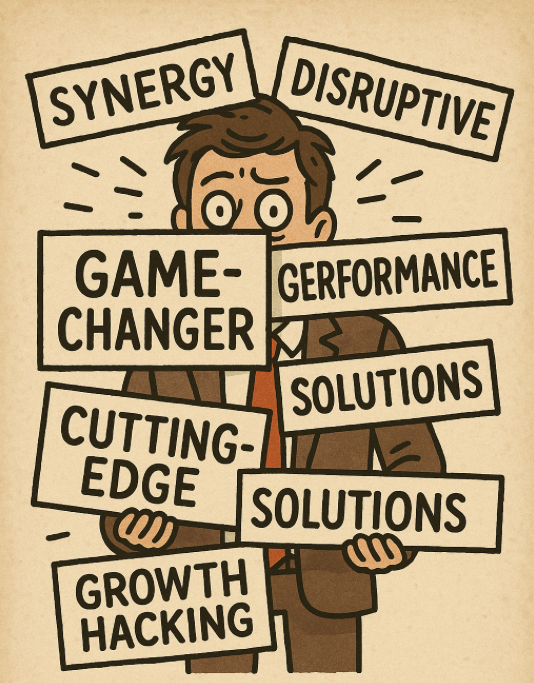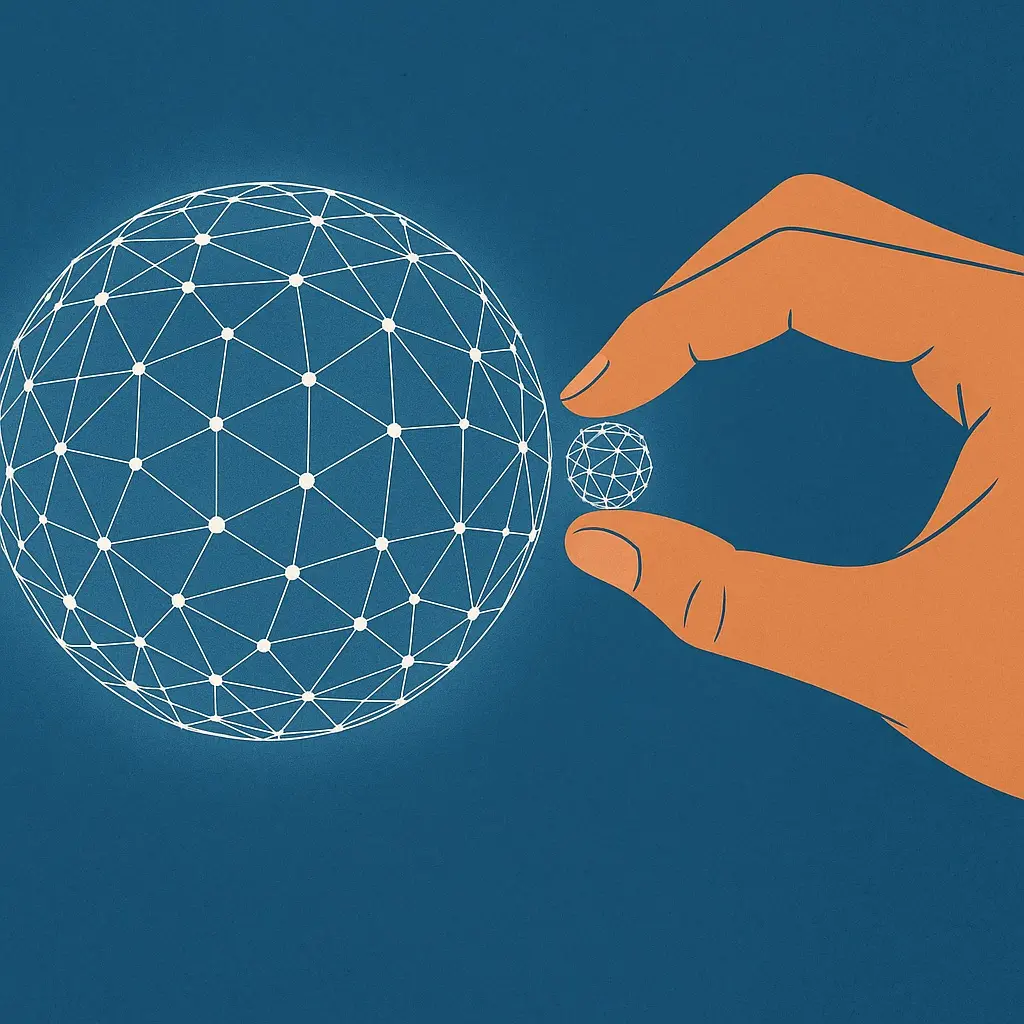If you’re one of the (surely rare) readers who’ve read my content before, you’ll know I favour direct honesty above all else. No fluff, no agency doublespeak – just the unvarnished truth.
That personal creed has a way of seeping into everything I write. And lately, it’s become more than just a personal quirk; it’s emerging as a bona fide marketing strategy.
Radical honesty is proving to be a boon for user experience and digital marketing effectiveness. Why? Because an audience that trusts you is an audience that sticks around, converts, and even advocates for you. In 2025’s crowded digital landscape, cutting the crap isn’t just noble – it’s smart.
What Is Radical Honesty in Marketing?
So what do we mean by “radical honesty” in a marketing context? It’s more than the usual “transparency” you see in agency talking points.
Traditional transparency might mean disclosing information when asked or required. Radical honesty means volunteering the whole truth – warts and all – because you choose to. It’s the difference between a press release that admits a minor glitch and a heartfelt blog post that says, “We messed up big time, and here’s exactly how.”
In practice, radical honesty for brands entails being candid about failures, challenges, and imperfections, as well as successes. It’s a brand saying, “Yes, our last product launch flopped, and here’s what we learned,” instead of spinning a mediocre result as a triumph.
This approach goes beyond polished corporate transparency; it’s unscripted, blunt, and surprisingly disarming. When done right, it gives people something solid to trust. After all, if you confess your flaws before anyone else does, there’s no skeleton left for the closet. You defuse the bomb before it can blow up on the cesspool of shit that is X.
Crucially, radical honesty in marketing isn’t about oversharing every trivial detail or airing boardroom soap operas for the fun of it. It’s honesty with purpose. The goal is to align with your audience’s desire for authenticity and to build trust by being the first to tell on yourself.
Think of it as the marketing equivalent of “owning the narrative.” Rather than waiting for customers to call out a mistake or sleuth out a secret, you put it on the table yourself, on your terms. That kind of candour can be shocking in a world where most brand communication is buffed to a glossy sheen.
But shocking or not, it’s effective. Done thoughtfully, it sets you apart from the hordes of companies still hiding behind half-truths and these usual buzzwords.

Why Radical Honesty (and Why Now)?
Why has radical honesty become the strategy du jour in 2025? In a word: trust. Audience trust in brands has been eroding for years, chipped away by every overhyped ad, every too-perfect Instagram campaign, every “sincere” CEO letter that reads like it was generated by an AI stuck in corporate cliché mode.
People – especially younger consumers – have gotten exquisitely good at sniffing out bullshit, and they’re sick to death of it. One recent report found that 73% of consumers are more loyal to brands they perceive to be authentic.
That’s a huge majority voting with their wallets for brands that keep it real. Authenticity isn’t a feel-good bonus anymore; it’s a baseline expectation.
Another big factor is content fatigue. We’re all drowning in content: ads, videos, posts, endless feeds of polished marketing. By mid-2025, audiences will have developed banner blindness not just to literal banners, but to anything that smells like generic, polished brand speak. What cuts through the noise is something raw and real.
As one industry trends report bluntly put it, “In 2025, it’s going to be all about radical honesty. People are tired of perfectly curated feeds. They crave the human element – the imperfections, the quirks, the realness. Sharing the raw moments, real customer stories, and the messy, behind-the-scenes part of running a business can create strong emotional connections.”
In other words, stripping away the glossy veneer isn’t a liability; it’s become an asset. When a TikTok or YouTube video feels like a genuine peek behind the curtain, viewers reward it with attention and trust. That’s a direct response to the overly staged influencer era we just passed through.
Remember the heyday of #ad posts with ring lights and airbrushed lives? Yeah, we’ve all had enough.
Platforms like TikTok have supercharged this demand for realness. The hottest trend on there now? “Deinfluencing.” That’s where creators tell you what not to buy, calling out products that failed to live up to the hype. It’s essentially radical honesty as entertainment – and it’s resonating, big time.
Millions of viewers are tapping “follow” because, finally, someone is telling them, “Save your money, this thing’s garbage,” instead of yet another paid endorsement. The fact that this counterintuitive candour draws an audience makes a profound point: in 2025, honesty is refreshing. It’s almost edgy. Being real with people has become the best way to earn their precious attention.
For marketers and digital strategists, this is a loud-and-clear signal that authenticity isn’t just a nice-to-have – it’s an urgent strategic priority.
Real-World Examples of Radical Honesty at Work
All this might sound abstract until you see it in action. Fortunately, more brands (and their leaders) are embracing radical honesty, and their stories are instructive.
Way back, Domino’s Pizza famously admitted in its ads that people thought its pizza tasted like cardboard and that even the CEO agreed! That campaign of “Yes, our pizza was terrible, so we fixed it” turned a laughable weakness into a lovable comeback story.
Closer to today, Patagonia took a radical stand with its “Don’t Buy This Jacket” campaign, openly telling customers that consumerism has an environmental cost. Imagine a company urging you not to buy its product! It sounds insane, but that radical transparency about the product’s impact only bolstered Patagonia’s credibility. It said we care more about our values than a quick sale, and that made values-driven customers love them even more.
These cases show that admitting faults or speaking inconvenient truths can flip the script, transforming cynics into believers and casual buyers into loyal fans. Even day-to-day brand communication is getting a truth makeover. Look at how some companies handle social media now versus a few years ago.
Instead of every post being a sterile promo, we’re seeing frank updates and real talk. Did a software service experience downtime? The best ones tweet something like, “We goofed. Servers overheated. It’s all hands on deck, and we’ll be back in 30. Hold tight.”
Customers respond to that far more positively than to a vague “We apologise for any inconvenience” with no ownership. Some consumer brands have started posting their bloopers and fails, turning potential embarrassment into engagement. It feels human, and people love to see that humanity.
Embracing these unscripted moments is becoming standard practice. Marketers have noticed that companies that show the human side – sharing behind-the-scenes content, admitting mistakes openly, and keeping an ongoing dialogue with customers – tend to reap the rewards in customer loyalty.
When your brand talks like a real person and not a press release, you spark actual conversations. Those conversations build community, and from community comes long-term loyalty.
When Honesty Backfires (Yes, It Can Happen)
Before we all run out and start live-streaming our brand’s every skeleton, a word of caution: Radical honesty isn’t a magic wand. Handled poorly, it can flop or even backfire spectacularly.
There’s a fine line between being refreshingly candid and making people wonder, “Why on earth are they telling us this?” One pitfall is timing. If you choose the wrong moment to get all vulnerable, you can come off as tone-deaf or manipulative. We’ve seen this when companies drop a tell-all confession in the middle of a crisis of their own making.
If customers are furious about, say, a data breach, and the CEO suddenly publishes a soul-baring essay about how hard it’s been to lead the company this year, it won’t earn sympathy – it’ll likely ignite more fury. Mistiming your honesty can look like you’re trying to change the subject or fish for pity. Not a good look.
Another risk: performative honesty. Audiences can smell insincerity a mile away. If your “radical honesty” campaign is just a new style of marketing theatre – oversharing minor faux-failures for clout, or feigning vulnerability because it’s trendy – it will backfire.
There was that cringe-inducing episode where a CEO posted a crying selfie on LinkedIn after laying off employees, presumably to show how deeply the decision affected him. The internet’s verdict? This wasn’t courage; it was cringe. It felt like the focus was on his feelings instead of those who lost their jobs.
The lesson: honesty that appears self-serving or staged will erode trust faster than silence. Likewise, dumping every personal or internal drama on your audience isn’t wise. People don’t want a soap opera; they want relevant honesty. If it doesn’t affect them or reflect your brand’s core values, think twice before broadcasting it.
Even genuine honesty about unsavoury actions can blow up in your face.
How to Implement Radical Honesty (Authentically)
So, how can marketers ride the radical honesty wave without wiping out? Here are some actionable strategies to infuse genuine honesty into your brand communication while staying aligned with your identity and building trust for the long haul:
Start Small and Be Consistent
Don’t wait for a huge scandal to suddenly “get real.” Begin weaving candour into everyday content. Share little behind-the-scenes stories, admit to a minor hiccup with a shipping delay, or let your support team acknowledge a known issue with humour and empathy. By normalising honesty in small moments, you build credibility gradually. Then, when a big issue arises, your audience is already used to you speaking plainly. Consistency is key – radical honesty isn’t a one-off campaign, it’s a habit.
Align Honesty with Your Brand Values
Authenticity doesn’t mean going off-brand. Your candid revelations should connect to what your brand stands for. If sustainability is a core value, be upfront about where you’re falling short environmentally and what you’re doing to improve. If you’re all about quality, openly talk about a batch that didn’t meet your standards and how you fixed it. Make sure the truths you tell reinforce the broader story you want customers to believe about you. Random or irrelevant confessions will only confuse people.
Own Your Weak Spots (With a Plan)
Every brand has weak spots – find yours before someone else does. Is it a product that isn’t as good as a competitor’s? A past mistake that still haunts forums? A policy that customers grumble about? Acknowledge these openly and early. Importantly, pair the admission with what you plan to do about it. For example: “We know our app’s UI was clunky last year – frankly, we dropped the ball. Here’s how we’re fixing it by next quarter…” By naming the problem and showing commitment to solving it, you turn a vulnerability into an opportunity for trust-building. When you do this proactively, you rob critics of their ammo and show you’re listening.
Gauge Timing and Tone
Not every moment is right for a big truth dump. Be strategic about when and how you bare your soul. Ideally, choose times when your honesty will be heard as intended, not lost in noise or misinterpreted. Also, keep the tone genuine. Write it like a human, not a PR robot. It’s okay if a statement from your CEO sounds like it came from an actual person with a conscience (because it should). If the news is serious, a little humility goes a long way. If it’s a lighter admission, a bit of self-deprecating humour can endear.
Always ask: How will our audience feel reading this now? If the answer is “annoyed” or “roll their eyes,” rethink and re-time your approach.
Follow Through and Follow Up
Honesty is only as good as what comes next. If you come clean about an issue, you must follow through on any promises made in that admission. And keep the dialogue open. Invite feedback and engage with it. Maybe you confessed to a product flaw – update your customers a month later about the fix progress. Show them that their trust in your honesty was well-placed by continuously acting in good faith. Over time, this cements a reputation: they say what they mean and do what they say. That’s the holy grail. Long-term trust comes from this cycle of saying and then doing. It’s a loop you have to keep feeding.
At the end of the day, radical honesty as a brand strategy isn’t for the faint of heart. It takes confidence, preparation, and yes, a bit of courage to pull off. It means giving up the comforting security blanket of perfect marketing and risking a little embarrassment or criticism.
But the rewards are compelling: a deeper connection with your audience, differentiation in a sceptical market, and the kind of trust that money just can’t buy.
In a cynical era, being straight-up and genuine is like a breath of fresh air. It feels different to consumers because it is different. And that difference can become your competitive edge.
So, to the marketers and digital strategists reading this, I’ll leave you with this thought: Polished and hollow brand language may feel “safe,” but it’s a fast track to being ignored. In 2025, bold honesty is smart marketing.
Cut the crap, speak human, and don’t be afraid to show a few cracks. Your audience will thank you for it – with their attention, their trust, and their loyalty. And that, surely, is worth coming clean for.
If you’d rather work with a digital marketing agency that tells it straight, even when it’s uncomfortable, get in touch. We don’t do BS. We do what works.


